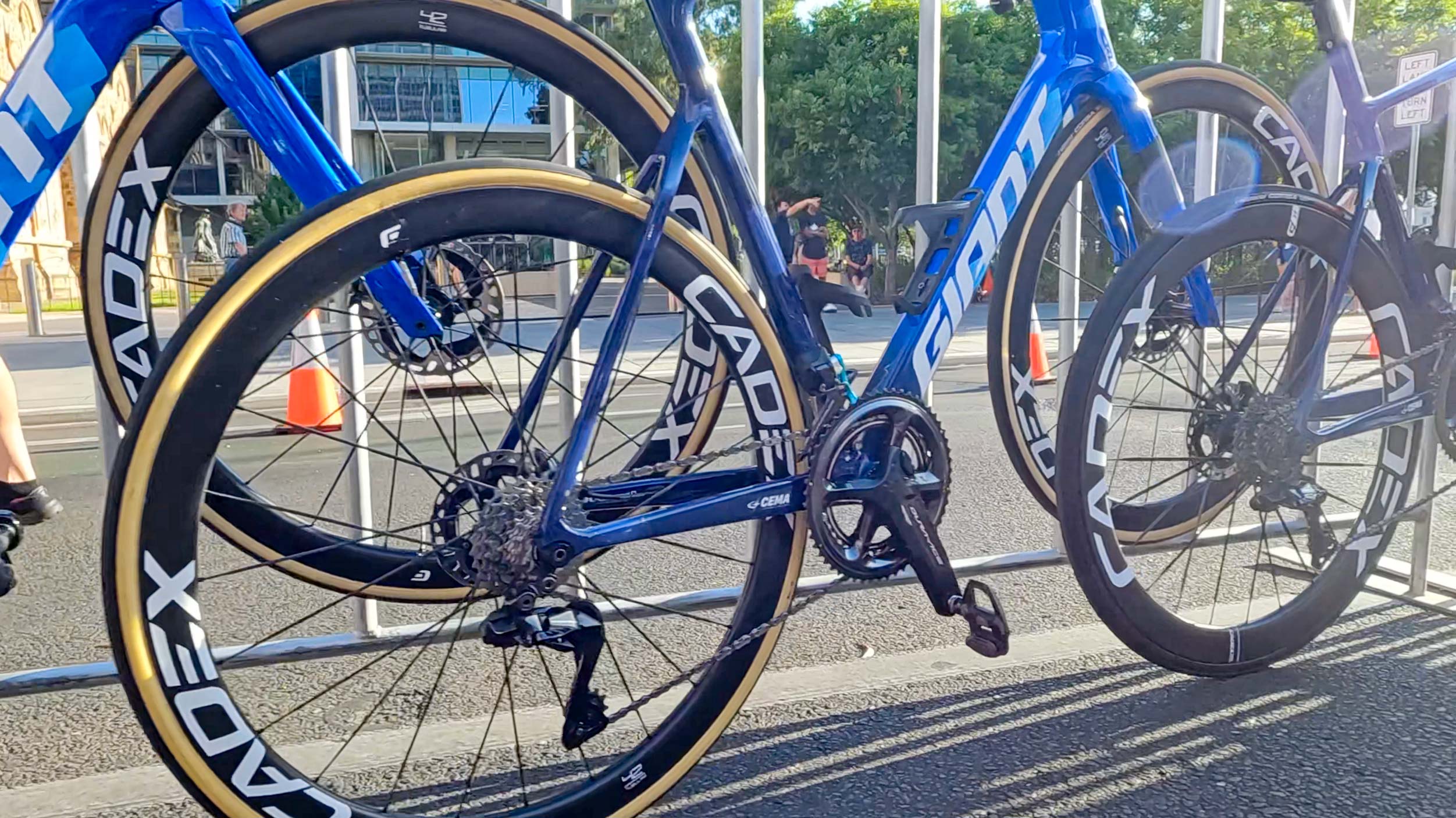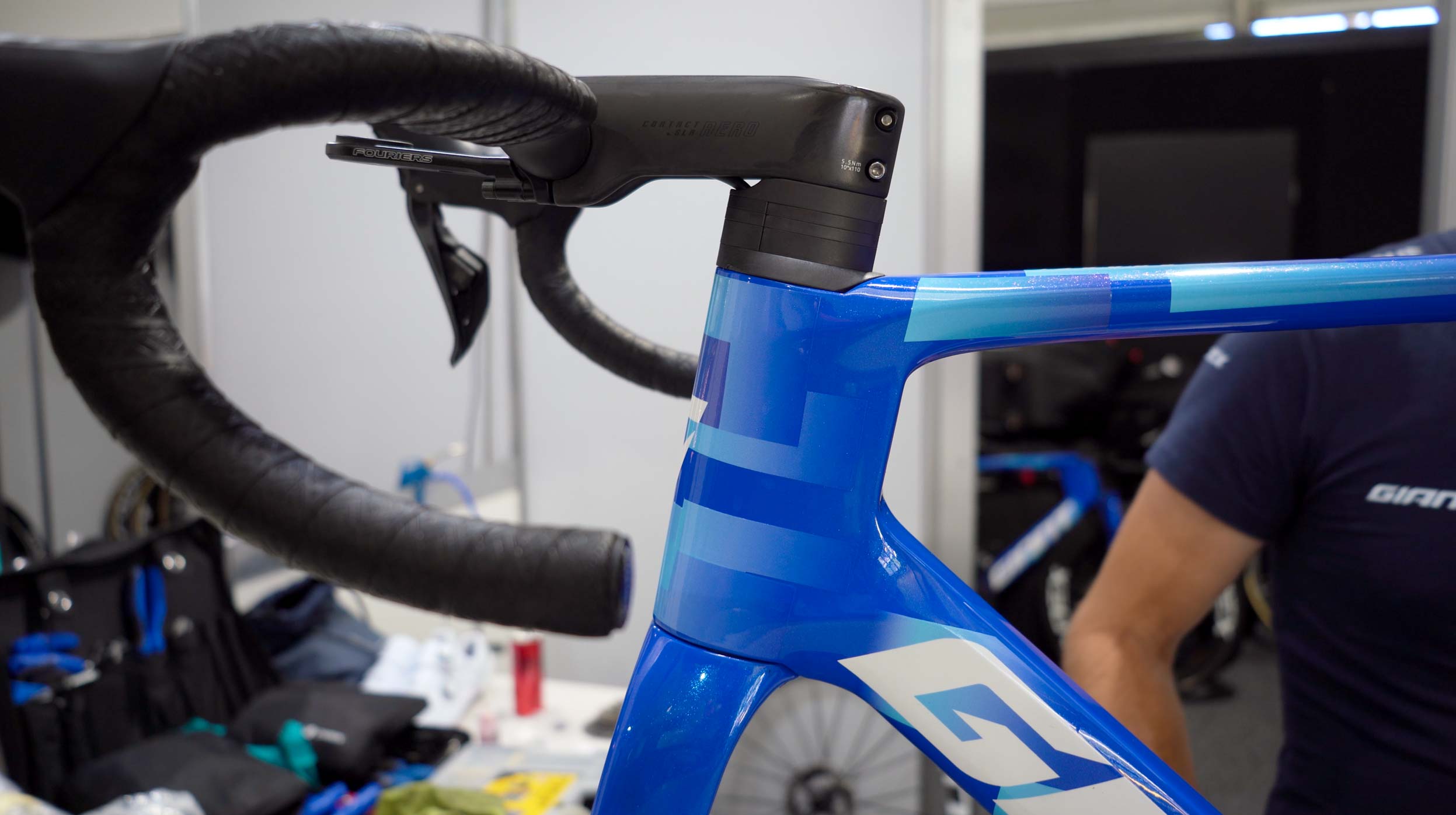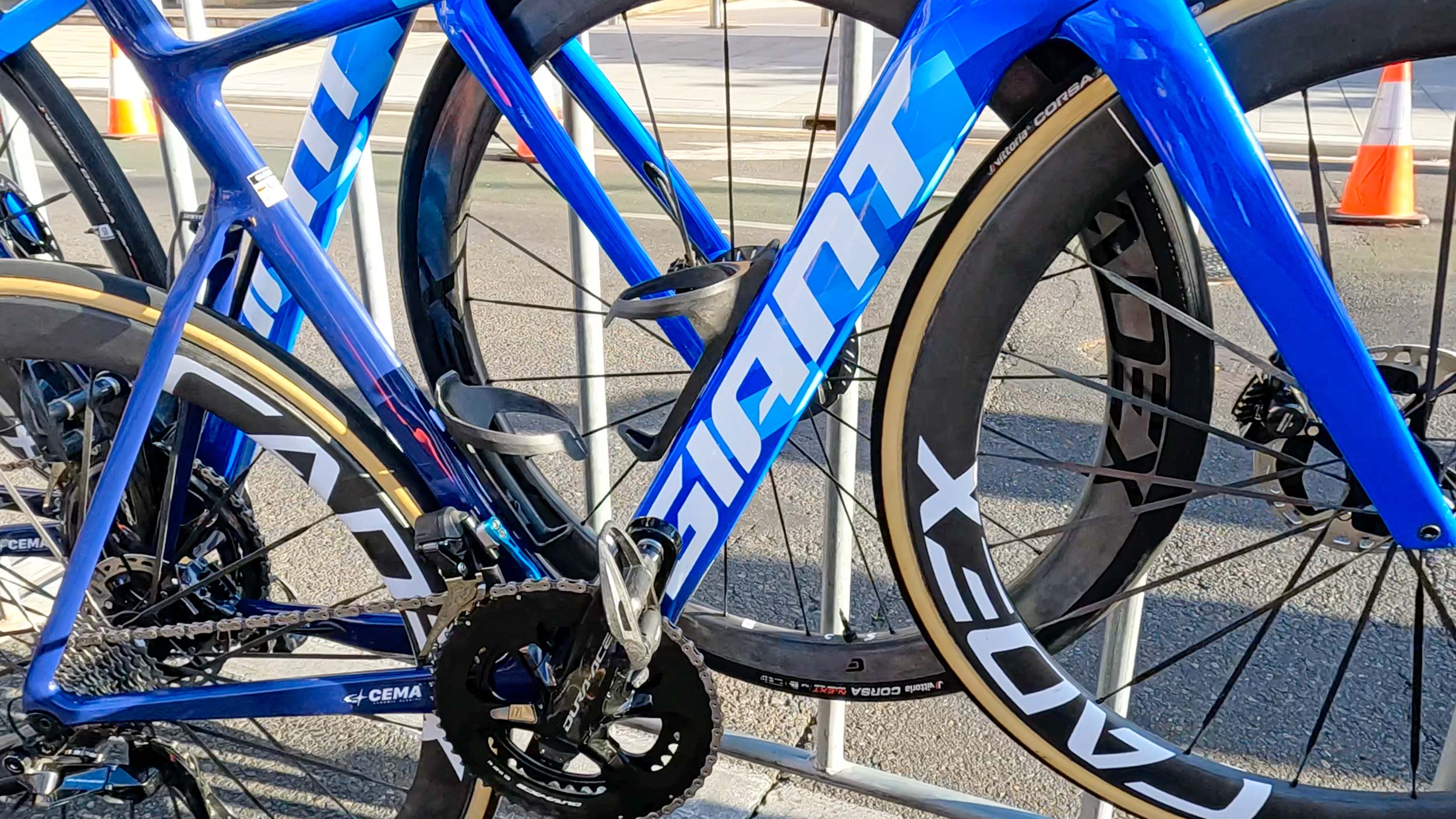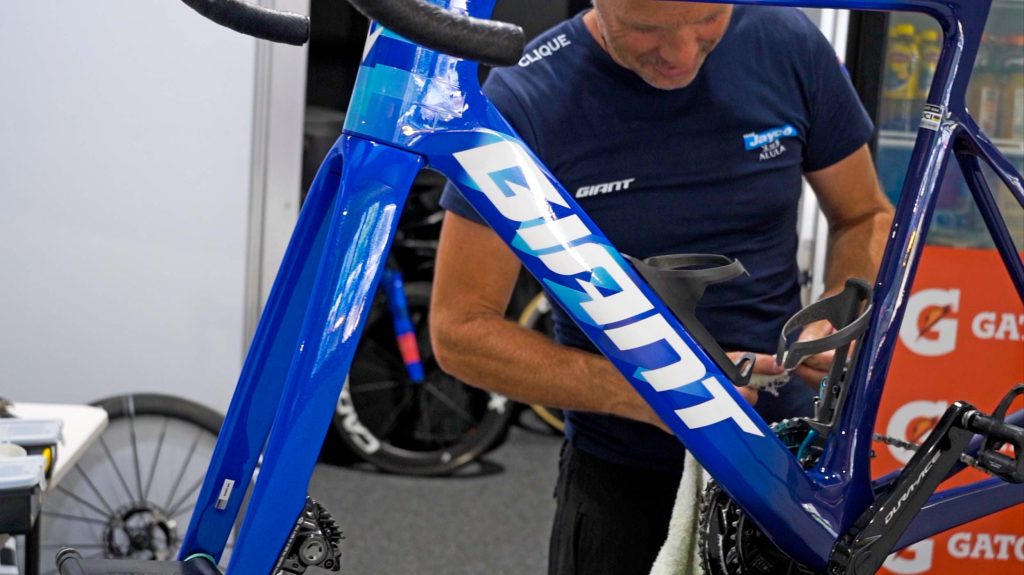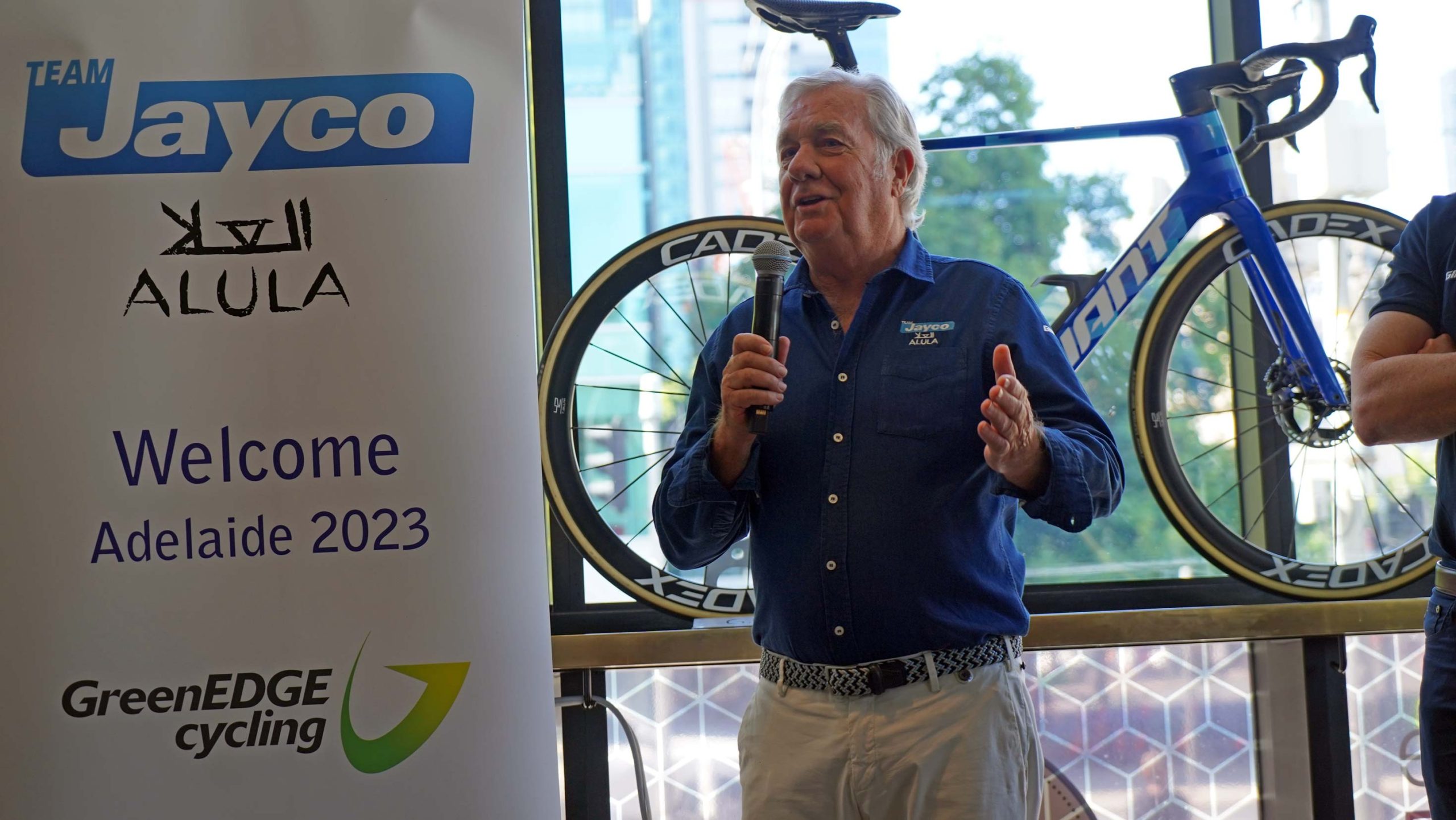During the TDU of 2023, RIDE Media spoke to a number of team mechanics to get an understanding of what kind of equipment is being used in the pro peloton. The series continues with this interview with Craig Geater of the Jayco-AlUla team, recorded before racing began…
– Part of a Team Bike series from the 2023 Tour Down Under (photos by Rob Arnold)
Craig Geater has worked with several pro cycling teams over the years. The New Zealander has been part of the GreenEdge project – known as Jayco-AlUla in 2023 – since inception. Over the last 10 years, he’s built thousands of bikes from a range of brands, always fitted with Shimano components.
This year, the bike of choice for most riders in the Jayco-AlUla team(s) – ie. the two WorldTour line-ups backed by Gerry Ryan, women and men – is the new Giant Propel Advanced SL.
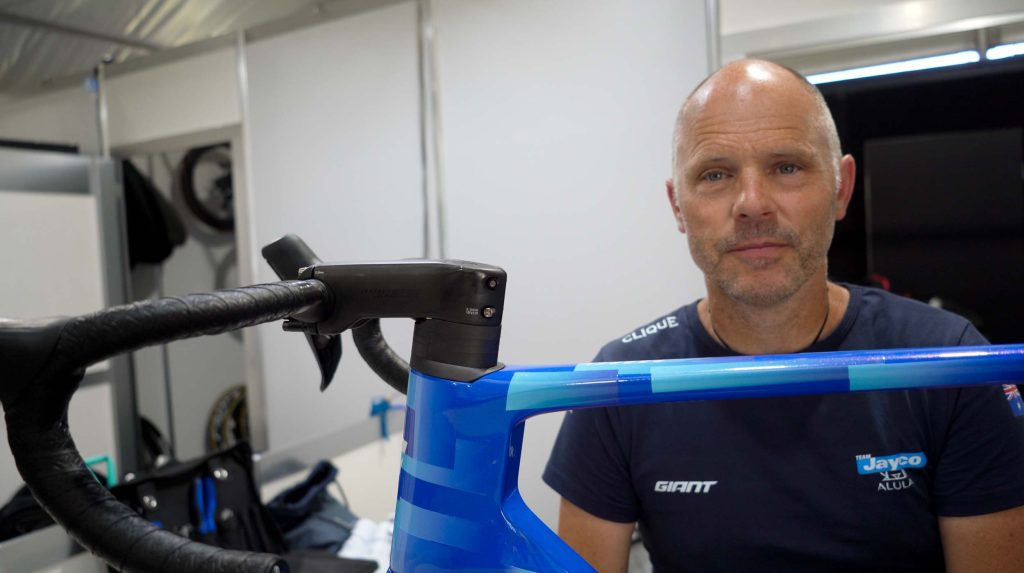
Craig Geater has been a mechanic for a number of pro teams over the years, including Discovery Channel and Astana before joining GreenEdge for its debut year back in 2012.
When I approached Geater on the Friday before racing began at the ‘Festival of Cycling’ in South Australia, he was working on the bike of Lucas Hamilton.
While he finished off the work he was doing on Hamilton’s Giant, I asked Geater if we could cover off some of the basics of the bikes being used by Jayco-AlUla riders in 2023.
My first question was if the riders on the team had any particular requests for the mechanics when they are preparing the bikes. “Not really anything special,” he says, noting that the Giants being raced in the pro peloton are – like most brands in the bunch these days – much the same as what a punter can buy.
“All the bikes are the same,” he continues. “Some of them have different handlebar widths and, obviously, stem lengths, which is normal. The rest is pretty much stock standard.”
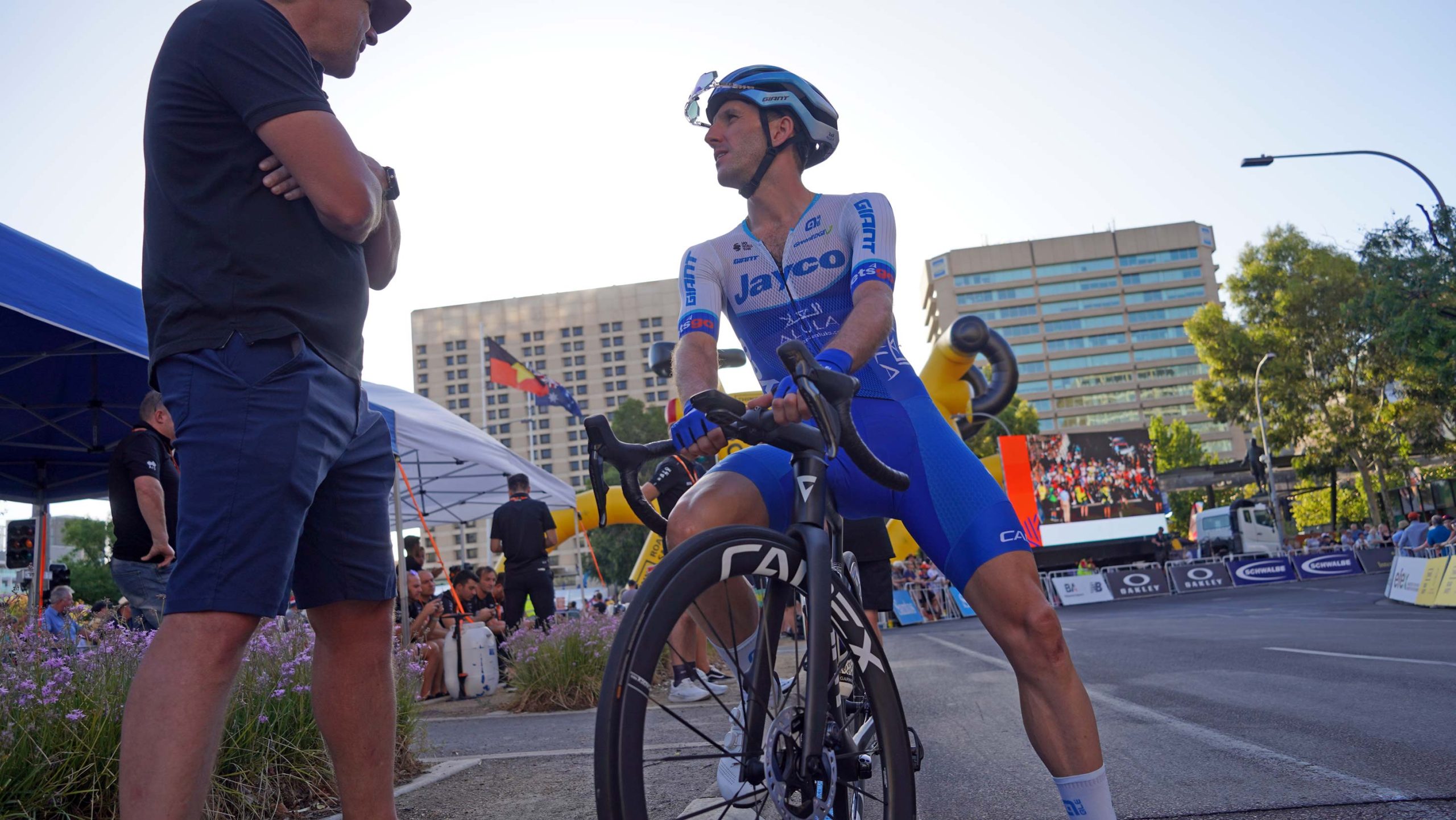
Simon Yates – the winner of stage five (and 2nd on GC at the TDU in 2023) – raced a Giant with a black frame while others in the men’s team used the new-season blue bikes.
Acceptance of disc brakes
There have been a number of big changes to road bikes in the last 10 years, with the introduction of disc brakes (which eventually received UCI approval for racing in 2018, after several years of controversy), electronic shifting, wider tyres, and a host of other subtle changes.
Hoses have replaced cables for brake activation and although there are still some teams opting to use rim brakes, the consensus from mechanics (and riders) seems to be that the benefits of disc brakes – and an improvement in technology – outweigh the drawbacks.
“Now it’s pretty stock standard,” says Geater about disc brakes.
“Some guys are old-school and prefer the old stuff, but you end up riding it and – after a little while – you get used to it and off you go.”
Does it make Geater laugh when he harks back to when there was such controversy about the introduction of disc brakes to the pro peloton? He offers his appraisal, of what now seems a distant memory. “I think, to a degree, a lot of people were just nervous of the change.
“Some riders didn’t think they needed them. Some mechanics struggled a little bit with them… but, then again, we have some mechanics in the team who have experience with [disc brakes] and they showed us all how it works properly.
“Once you understand it, it works it’s pretty good.”
– Click the link below to see the bikes of 18 pro teams in 2023. –
Tyres and lubricants?
Testing in the wind tunnel means that frame shapes are becoming more generic. Most of the mechanics interviewed agreed that aerodynamics has become the key priority in modern cycling, although weight remains a strong consideration in the quest for The Perfect Race Bike.
Still, technical innovation continues to influence the market and the pro peloton is now also adopting equipment changes that everyday riders have been using for many years already.
Tyre selection remains a talking point, with mechanics explaining that it is often a personal choice for the riders (although some teams have taken a one-option-for-all approach).
Tubulars were once the mainstay for racing but these days there is more choice.
Tubeless tyre technology for road bikes has improved dramatically of late and there are some teams, like Jumbo-Visma, that will race exclusively with this option in 2023.
Jayco-AlUla has a mix: tubular and tubeless, and Geater explains that even the spare wheels for the team’s riders are fitted with the rider’s preference.
“We use tubular and tubeless, depending on where we’re racing,” he says, adding that the team uses a range of sizes – even continuing at times with 23mm, but also 25, 28 and 30.
“Some guys still like to ride tubular,” says Geater, “and there’s quite a few guys that really like the tubeless as well – so it’s personal preference but we have all the options for them.
“We have both options in the [team] car as well, so we generally try to replace the wheel with exactly what they had because obviously the feeling is a little bit different. So, if some guys prefer one type to the other, we like to try and keep them on the same stuff if they do need a wheel change.”
Vittoria is the tyre supplier for Jayco-AlUla and there is a mix of tan and black sidewalls (tubulars and tubeless, respectively) in the team’s fleet.
Another difference between teams is the choice of lubricant used for the chains, with wax starting to become more prevalent in modern cycling. For Jayco-AlUla, it’s a mix: wax for most time trials, and oil for road bikes.
“On our road bikes we go with the standard lube most of the time,” says Geater.
“We try to make our equipment go as far as possible,” he says, respecting the claim that the proper use of wax can increase the longevity of cassettes and chainrings.
With pro teams, however, the bikes are cleaned and serviced on a regular basis, so the wear on components is different to how it might be for general riding.
Geater also highlights the reality that the impact of the pandemic on the supply chain continues in 2023, and product supply isn’t as simple as it once was.
“It’s quite hard to get equipment these days, even for trade teams. You know, the market needs it, we need it… demand is pretty tight.”
Oil on chains, says Geater, is still a practical option even though he understands that there are the benefits of saving watts when using wax.
“The testing shows it’s better,” says Geater of wax, “[but] I think some of the road stages are a little bit too long – but that’s only my own opinion… you have to take in temperatures as well – the heat, the cold. So yeah, it’s a that’s a work in progress like everything I guess.”
– By Rob Arnold
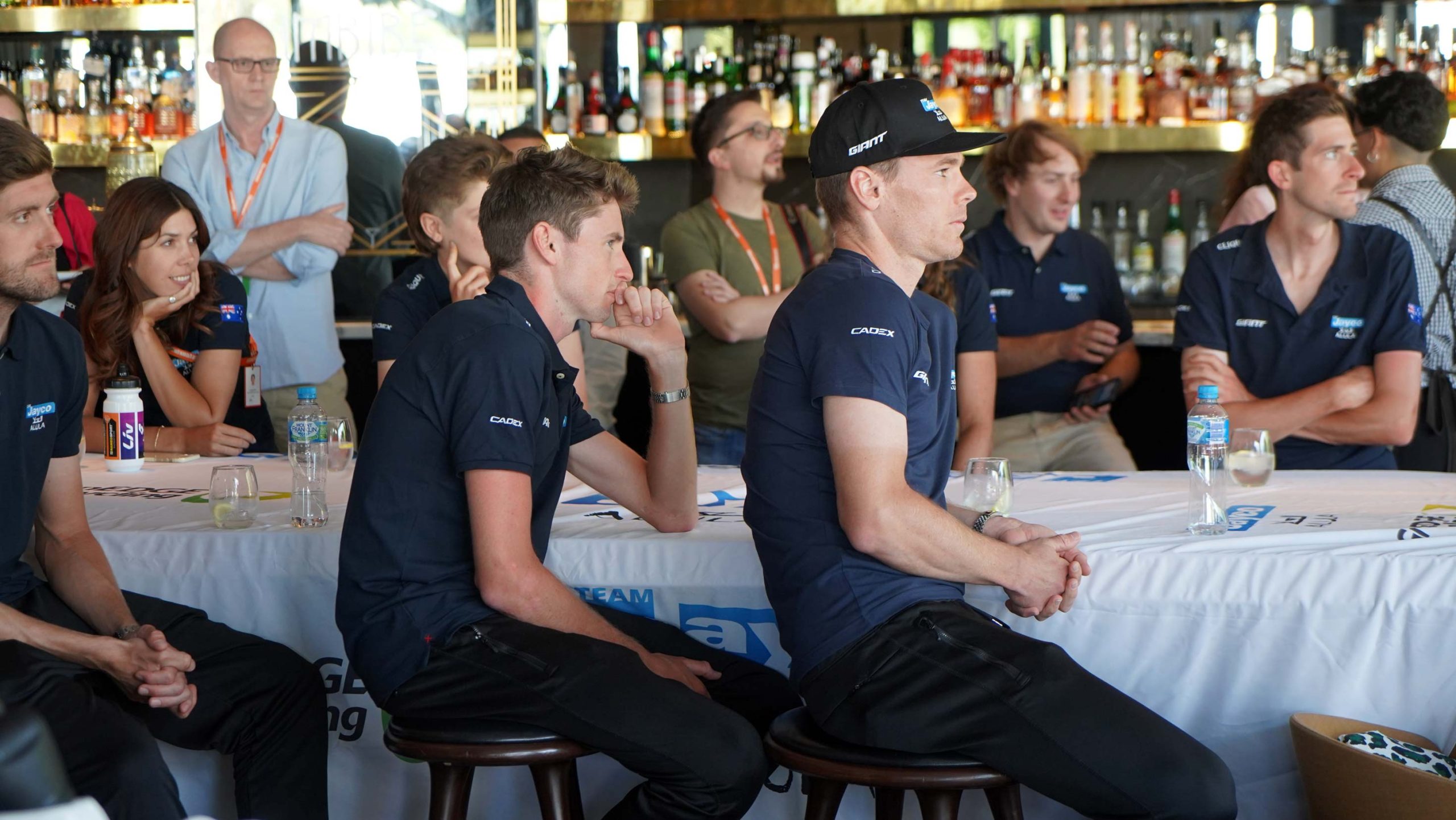
Lucas Hamilton and Michael Hepburn watch the presentation about the team’s new title sponsor, AlUla, during the launch at the Adelaide Hilton.
Stay tuned for more bike galleries and videos about equipment used at #TDU2023.
Subscribe to RIDE Media’s YouTube channel and get notifications when new videos are uploaded.


